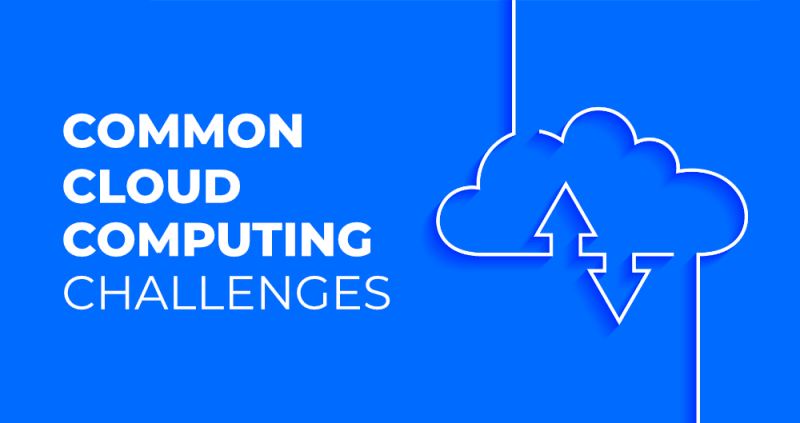Cloud computing has revolutionized the way businesses operate by offering flexible and scalable IT resources that can be accessed from anywhere. Cloud computing services have made it possible for companies to scale their operations without having to invest in costly hardware or infrastructure. However, the adoption of cloud computing has also brought with it a number of challenges for businesses. In this article, we will explore twelve of the most common cloud computing challenges businesses face.
Security
Security is one of the biggest concerns when it comes to cloud computing. Businesses are worried about the security of their data when it is stored on a third-party server. They fear that their data might be accessed by unauthorized users or that it might be lost due to a security breach. To address this challenge, businesses must ensure that their cloud provider has robust security measures in place. They should also encrypt their data and regularly backup their data to mitigate the risk of data loss.
Compliance
Another challenge businesses face with cloud computing is compliance. Different countries and regions have different data protection laws that businesses must comply with. Businesses must ensure that their cloud provider is compliant with all applicable laws and regulations, especially those that relate to data privacy and protection. Failure to comply with these regulations can result in hefty fines and legal action.
Vendor lock-in
Vendor lock-in is a challenge businesses face when they rely on a single cloud provider for all their IT needs. If the provider raises prices or experiences a service outage, the business may be unable to migrate to another provider quickly. To address this challenge, businesses should consider adopting a multi-cloud strategy, where they use services from multiple providers.
Performance
Cloud computing services can sometimes experience performance issues due to a number of factors, such as network latency, server downtime, or bandwidth limitations. To ensure optimal performance, businesses must work with their cloud provider to ensure that their resources are allocated correctly and that they have access to sufficient bandwidth.
Cost
Cloud computing can be expensive, especially if businesses do not properly manage their usage. Businesses must ensure that they are using the right cloud resources for their needs and that they are not overpaying for unused resources. To address this challenge, businesses should regularly review their usage and optimize their cloud infrastructure to reduce costs.
Migration
Migrating to the cloud can be a complex and time-consuming process, especially for businesses that have a large amount of data. Migrating data to the cloud requires careful planning and execution to ensure that data is not lost or corrupted. To address this challenge, businesses should work with their cloud provider to develop a migration plan that ensures minimal downtime and data loss.
Integration
Cloud computing services must integrate with a company's existing IT infrastructure to be effective. However, integrating cloud services with existing systems can be challenging due to differences in technology and data formats. To address this challenge, businesses should work with their cloud provider to ensure that their cloud services can be seamlessly integrated with their existing systems.
Complexity
Cloud computing services can be complex and difficult to manage, especially for businesses that do not have an in-house IT team. Businesses must ensure that they have the necessary expertise to manage their cloud infrastructure or that they work with a managed service provider to ensure that their cloud infrastructure is properly managed.
Lack of control
Cloud computing services can sometimes give businesses a feeling of lack of control over their IT resources. This can be especially true if the cloud provider does not provide visibility into their infrastructure or if there are limitations on what businesses can do with their resources. To address this challenge, businesses should work with their cloud provider to ensure that they have full visibility and control over their cloud infrastructure.
Scalability
One of the biggest benefits of cloud computing is scalability, but businesses must ensure that they can scale their IT resources when needed. This requires planning and resource management to ensure that resources are available when needed and that they can be scaled up or down quickly.
Reliability
Cloud computing services are only as reliable as the provider that offers them. Businesse must ensure that their cloud provider has a track record of reliability and that they offer Service Level Agreements (SLAs) that provide compensation in the event of service outages or downtime. To address this challenge, businesses should carefully evaluate their cloud provider and choose a provider that has a proven track record of reliability.
Culture
Finally, businesses must address the cultural challenges that come with adopting cloud computing. This includes training employees to use new tools and technologies and ensuring that they understand the benefits of cloud computing. Businesses must also ensure that their organizational culture supports the adoption of cloud computing and that they have the necessary resources and support in place to ensure a successful transition.
Conclusion
Cloud computing offers many benefits to businesses, but it also comes with its own set of challenges. These challenges can be addressed by working closely with a cloud provider and ensuring that the necessary planning, resources, and management are in place to ensure a successful adoption of cloud computing. By addressing these challenges, businesses can take advantage of the flexibility, scalability, and cost savings that cloud computing offers.





Top comments (0)